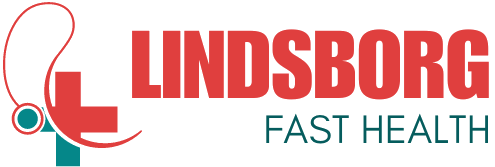Orthopedics, derived from the Greek words “ortho” meaning straight and “pais” meaning child, is a branch of medicine concerned with the diagnosis, treatment, and prevention of disorders and injuries of the musculoskeletal system. This comprehensive guide aims to delve into the intricacies of orthopedics, exploring its anatomy, common conditions, diagnostic techniques, treatment options, and future directions.
Definition of Orthopedics Orthopedics encompasses a wide array of conditions affecting bones, joints, muscles, ligaments, tendons, and nerves. It deals with both congenital and acquired disorders, aiming to restore function and alleviate pain in patients of all ages.
Historical Overview The roots of orthopedics trace back to ancient civilizations, where primitive techniques were used to treat bone fractures and deformities. Over time, the field evolved with advancements in surgical techniques, anesthesia, and medical imaging.
Importance in Modern Medicine In contemporary healthcare, orthopedics plays a crucial role in enhancing quality of life for individuals with musculoskeletal issues. From minor injuries to complex surgeries, orthopedic interventions have revolutionized mobility and functionality for millions worldwide.
II. Anatomy and Physiology Basics
Skeletal System Overview The skeletal system provides structural support and protects vital organs while facilitating movement through its interconnected bones and joints. Understanding bone composition, growth, and remodeling is fundamental in orthopedic diagnosis and treatment.
Muscular System Overview Muscles are integral to movement, working in tandem with bones and joints to produce motion. Knowledge of muscle anatomy and physiology guides orthopedic interventions aimed at strengthening, stretching, and rehabilitating injured muscles.
Joint Structures and Functions Joints are the articulations where two or more bones meet, allowing for a range of movements such as flexion, extension, and rotation. An understanding of joint anatomy, biomechanics, and stability is essential in managing conditions like arthritis and ligament injuries.

III. Common Orthopedic Conditions
Arthritis and Rheumatic Diseases Arthritis encompasses a group of inflammatory conditions affecting joints, causing pain, stiffness, and swelling. Rheumatoid arthritis, osteoarthritis, and gout are among the most prevalent forms, each requiring tailored treatment approaches.
Fractures and Dislocations Fractures result from bone trauma, leading to partial or complete breaks in the bone structure. Dislocations occur when the normal alignment of a joint is disrupted, often due to sudden impact or excessive force.
Ligament and Tendon Injuries Ligaments and tendons are fibrous tissues that connect bones and muscles, providing stability and mobility. Injuries such as sprains, strains, and tears can impair joint function and require prompt medical attention.
Osteoporosis Osteoporosis is a progressive bone disease characterized by decreased bone density and increased fracture risk. It predominantly affects older adults, particularly postmenopausal women, highlighting the importance of preventive measures and early detection.
IV. Diagnostic Techniques in Orthopedics
X-rays and Imaging Conventional radiography, including X-rays, remains a primary tool for diagnosing bone fractures, joint dislocations, and skeletal abnormalities. X-ray images provide valuable insights into bone integrity and alignment.
Magnetic Resonance Imaging (MRI) MRI utilizes magnetic fields and radio waves to generate detailed images of soft tissues, including muscles, ligaments, and cartilage. It is instrumental in diagnosing conditions such as ligament tears, spinal cord injuries, and tumors.
Computerized Tomography (CT) Scan CT scanning combines X-ray technology with computer processing to create cross-sectional images of the body. It offers enhanced visualization of bone structures and is particularly useful in assessing complex fractures and spinal abnormalities.
Blood Tests and Biomarkers Blood tests may be employed to evaluate markers of inflammation, infection, or metabolic disorders that can affect the musculoskeletal system. Biomarker analysis aids in diagnosing conditions like rheumatoid arthritis and osteoporosis, guiding treatment decisions.
V. Orthopedic Treatment Options
Non-Surgical Approaches
Physical Therapy Physical therapy focuses on restoring mobility, strength, and function through targeted exercises and manual techniques. It plays a vital role in rehabilitation following orthopedic surgery and helps prevent recurring injuries.
Medications Pharmacotherapy may involve nonsteroidal anti-inflammatory drugs (NSAIDs), analgesics, corticosteroids, or disease-modifying agents to manage pain, inflammation, and underlying conditions like arthritis.
Orthotic Devices Orthoses, such as braces, splints, and orthopedic shoe inserts, provide support, alignment, and protection for injured or weakened joints. They help alleviate pain and promote healing in various orthopedic conditions.
